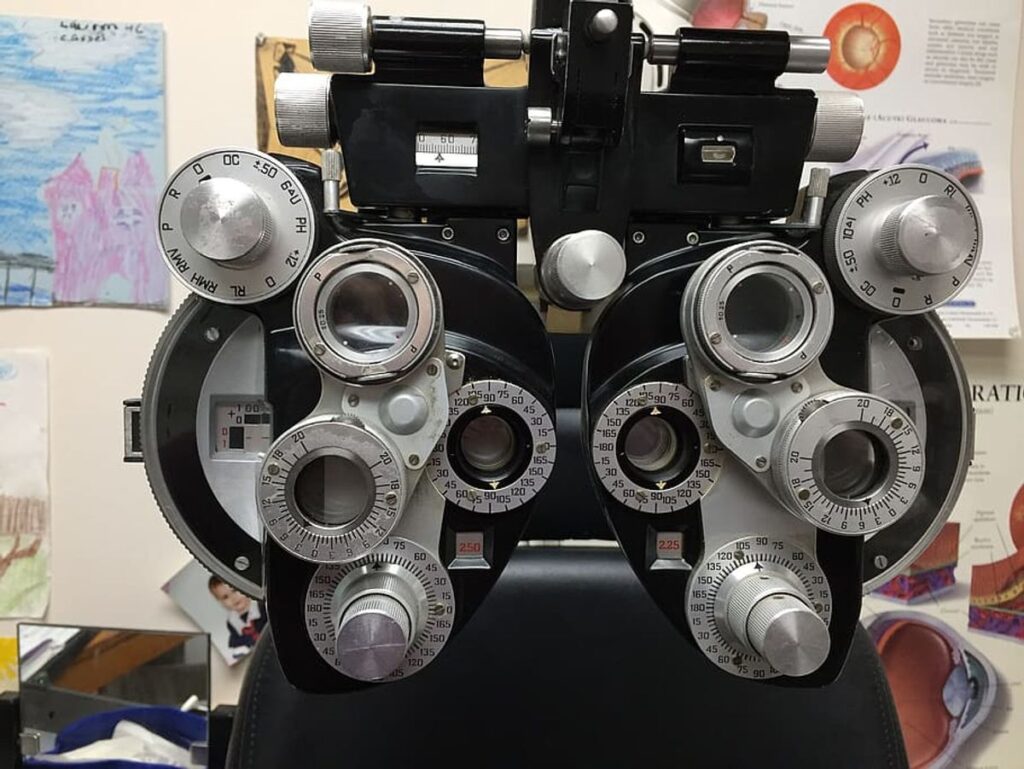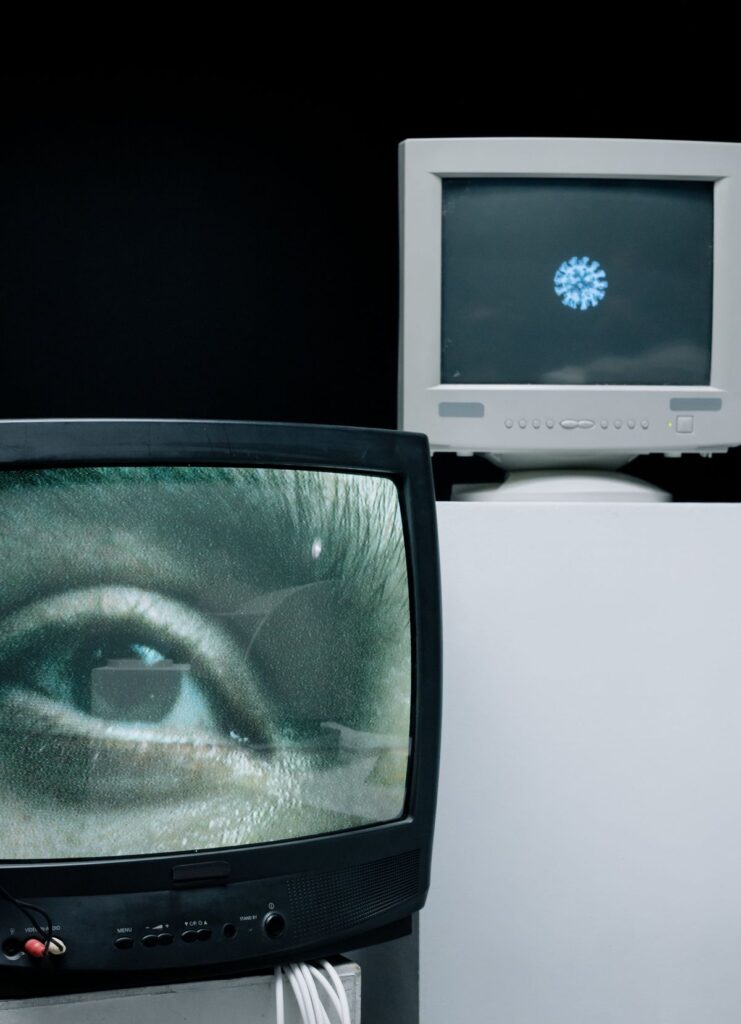The field of vision care is rapidly evolving with the introduction of virtual optometrist tools. These innovative technologies are reshaping the way individuals access eye care services and enhancing the overall patient experience. From virtual eye exams to AI-powered diagnostics, the landscape of optometry is being revolutionized to provide more convenient and personalized solutions for patients.
Key Takeaways
- Virtual optometrist tools are transforming the vision care industry.
- AI-powered diagnostics are revolutionizing the way eye conditions are diagnosed and treated.
- Convenience and accessibility are key benefits of virtual eye care services.
- Personalized treatment plans are enhancing the patient experience in optometry.
- Innovative technologies like smart contact lenses are paving the way for the future of vision care.
The Evolution of Vision Care

Advancements in Telemedicine
The realm of vision care has been revolutionized by the integration of telemedicine, enabling patients to receive eye care services from the comfort of their homes. Telemedicine has made it possible for optometrists to extend their reach beyond traditional office settings, offering consultations and preliminary assessments through digital platforms.
- Increased patient engagement
- Reduced need for in-person visits
- Expanded access to specialist care
The convenience offered by telemedicine has not only optimized the workflow for eye care professionals but also enhanced the overall patient experience. This shift towards virtual consultations has paved the way for more innovative approaches in vision health management.
Virtual Eye Exams
The advent of virtual eye exams marks a significant milestone in the field of optometry, offering a convenient alternative to traditional in-person assessments. Patients can now undergo comprehensive eye examinations from the comfort of their own homes, leveraging the capabilities of their personal devices and internet connectivity.
Virtual eye exams typically involve a series of steps to evaluate one’s vision and eye health:
- Completing a pre-examination questionnaire to gather personal and family eye health history.
- Following guided instructions to perform vision tests using a computer or smartphone.
- Automated analysis of test results to identify potential vision problems.
- A review session with a licensed optometrist who provides a diagnosis and recommendations.
The integration of virtual eye exams into vision care routines has the potential to revolutionize accessibility, making regular eye health check-ups more attainable for individuals in remote or underserved areas.
While virtual eye exams are a breakthrough, they are not a replacement for all traditional optometry practices. Certain conditions and comprehensive tests still require in-person visits. However, for routine checks and initial consultations, virtual exams provide an invaluable service.
Personalized Vision Correction
The advent of personalized vision correction marks a significant milestone in the realm of virtual optometrist tools. Custom-tailored corrective solutions are now possible thanks to the integration of advanced algorithms and patient-specific data analysis. These personalized approaches not only enhance visual acuity but also cater to the unique lifestyle and preferences of each individual.
Personalized vision correction strategies have revolutionized the way we think about eyewear and contact lenses. The focus has shifted from one-size-fits-all solutions to bespoke corrections that adapt to the user’s daily activities and visual demands.
The benefits of personalized vision correction are manifold, including improved comfort, better visual outcomes, and a higher satisfaction rate among patients. Here’s a brief overview of the advantages:
- Enhanced visual comfort and reduced eye strain
- Tailored to individual prescription needs
- Consideration of lifestyle factors such as screen usage
- Potential for integration with smart technology
As we continue to witness the convergence of technology and healthcare, personalized vision correction stands out as a beacon of innovation, promising a future where eye care is more precise, effective, and attuned to the needs of the patient.
Innovative Technologies in Optometry

AI-Powered Diagnostics
The integration of artificial intelligence in optometry has revolutionized the way eye health is managed. AI-powered diagnostic tools are now capable of detecting and predicting a range of eye conditions with remarkable accuracy. These systems analyze vast amounts of data, including retinal images and visual field tests, to assist optometrists in diagnosing diseases such as glaucoma, diabetic retinopathy, and age-related macular degeneration.
The use of AI in vision care not only enhances the precision of diagnoses but also streamlines the workflow for eye care professionals, allowing them to focus on patient care rather than administrative tasks.
Here’s a glimpse of the impact AI has had on diagnostic accuracy in recent studies:
These advancements are just the beginning. As technology continues to evolve, we can expect AI to play an even more integral role in the early detection and management of eye diseases, potentially saving millions from preventable vision loss.
Virtual Reality Eye Training
The integration of Virtual Reality (VR) into eye training programs represents a significant leap forward in optometric therapy. VR technology offers immersive environments that can be tailored to address specific visual impairments, providing patients with a dynamic and engaging way to improve their vision health.
- Customized Exercises: VR programs can be customized to the patient’s unique vision needs, enhancing the effectiveness of the training.
- Progress Tracking: Real-time feedback and progress tracking encourage patients to stay engaged and motivated.
- Accessibility: VR eye training can be accessed from the comfort of home, making it a convenient option for many.
The potential of VR eye training extends beyond traditional exercises, offering a platform for patients to work on visual skills that are difficult to replicate in a standard clinical environment. This technology is not only transforming how we approach vision therapy but also how patients experience it.
The table below outlines the benefits of VR eye training compared to traditional methods:
By leveraging the capabilities of VR, optometrists can create a more effective and enjoyable vision correction journey for their patients.
Smart Contact Lenses
The advent of smart contact lenses marks a significant leap forward in optometry, blending vision correction with cutting-edge technology. These lenses are not only designed to improve sight but also to monitor ocular health and provide real-time data about the wearer’s condition.
Smart contact lenses offer a multifaceted approach to vision care, integrating sensors that can track changes in intraocular pressure, glucose levels, and even deliver medications directly to the eye. This innovation is particularly promising for patients with chronic conditions such as glaucoma or diabetes.
- Monitoring: Continuous tracking of ocular health indicators.
- Medication: Direct delivery system for drugs treating eye conditions.
- Data Integration: Seamless connection with mobile devices for data analysis and health management.
The potential of smart contact lenses extends beyond traditional vision correction, opening new possibilities for proactive health monitoring and personalized eye care solutions.
Enhancing Patient Experience

Convenience and Accessibility
The integration of virtual optometrist tools has significantly enhanced the convenience and accessibility of vision care. Patients can now access professional eye care services with just a few clicks, bypassing the need for travel and wait times associated with traditional in-person visits.
- Ease of Scheduling: Online platforms allow for flexible appointment times, fitting into patients’ busy lifestyles.
- Geographical Reach: Those in remote or underserved areas can receive the same level of care as those in urban centers.
- Reduced Need for Physical Visits: Follow-up appointments and consultations can often be handled virtually, saving time and resources.
The democratization of vision health through technology not only simplifies the process of obtaining eye care but also opens doors to continuous and proactive management of one’s visual health.
Remote Monitoring Solutions
The integration of remote monitoring solutions in vision care has revolutionized the way patients manage their eye health. Remote monitoring allows for continuous oversight of a patient’s vision, enabling timely interventions and adjustments to treatment plans. This proactive approach can lead to better outcomes and a more personalized patient experience.
- Real-time data collection on vision health
- Alerts for patients and providers when intervention is needed
- Seamless integration with existing healthcare systems
With remote monitoring, patients no longer need to wait for their next appointment to address changes in their vision. This immediacy can be particularly beneficial for individuals with progressive eye conditions, as it facilitates early detection and management of potential issues.
The benefits of remote monitoring extend beyond individual care. They also contribute to a broader understanding of vision health trends, informing future innovations in optometry. By leveraging these solutions, healthcare providers can offer a higher standard of care, tailored to the unique needs of each patient.
Customized Treatment Plans
The advent of customized treatment plans marks a significant leap forward in patient-centric care. Personalization in vision health is not just about addressing the unique needs of each patient, but also about enhancing the overall experience. Tailored treatment strategies can lead to better outcomes and higher satisfaction.
With the integration of advanced analytics and patient data, optometrists can now develop treatment plans that are as unique as the individuals they serve. This bespoke approach ensures that each patient receives the most effective treatment, considering their lifestyle, preferences, and specific vision challenges.
Customized treatment plans often involve a combination of various elements:
- Prescription lenses adjusted to daily activities
- Personalized eye exercises
- Scheduled follow-ups based on individual progress
- Recommendations for vision-enhancing supplements
By embracing this personalized methodology, optometry practices are setting a new standard for patient care, one that acknowledges the diverse requirements and expectations of their clientele.
At the heart of healthcare, enhancing the patient experience is paramount. Our innovative solutions, like OPTIGRID, streamline processes to ensure that every patient feels heard, valued, and cared for. Discover how we can transform your patient interactions by visiting our website. Don’t just meet expectations—exceed them with our cutting-edge technology.
Conclusion
In conclusion, the rise of virtual optometrist tools is revolutionizing the way individuals access vision care. These innovative technologies are making eye health more accessible, convenient, and efficient for people around the world. As virtual optometry continues to evolve and improve, it has the potential to significantly impact the future of vision health and eye care services. Embracing these advancements can lead to better eye health outcomes and a more seamless experience for patients seeking vision care.
Frequently Asked Questions
What is telemedicine in the context of vision care?
Telemedicine in vision care refers to the use of digital communication technologies to provide remote eye care services, such as virtual consultations and online eye exams.
How do virtual eye exams work?
Virtual eye exams utilize technology to assess vision and eye health remotely, often involving interactive tools and digital devices to simulate traditional in-person eye exams.
What are personalized vision correction solutions?
Personalized vision correction solutions involve customized treatment plans tailored to individual needs, which may include specialized lenses, vision therapy, or other interventions.
What is AI-powered diagnostics in optometry?
AI-powered diagnostics in optometry utilize artificial intelligence algorithms to analyze eye health data, assist in diagnosing eye conditions, and provide insights for personalized care.
How does virtual reality eye training benefit vision health?
Virtual reality eye training offers interactive exercises and simulations to improve visual skills, enhance eye coordination, and support overall vision health through immersive experiences.
What are smart contact lenses and their role in vision care?
Smart contact lenses are innovative wearable devices that can monitor eye health metrics, provide real-time data on vision status, and offer features like augmented reality overlays for enhanced vision experiences.

I am a seasoned software engineer with over two decades of experience and a deep-rooted background in the optical industry, thanks to a family business. Driven by a passion for developing impactful software solutions, I pride myself on being a dedicated problem solver who strives to transform challenges into opportunities for innovation.
